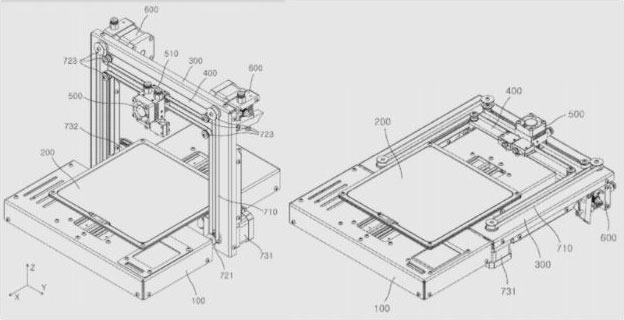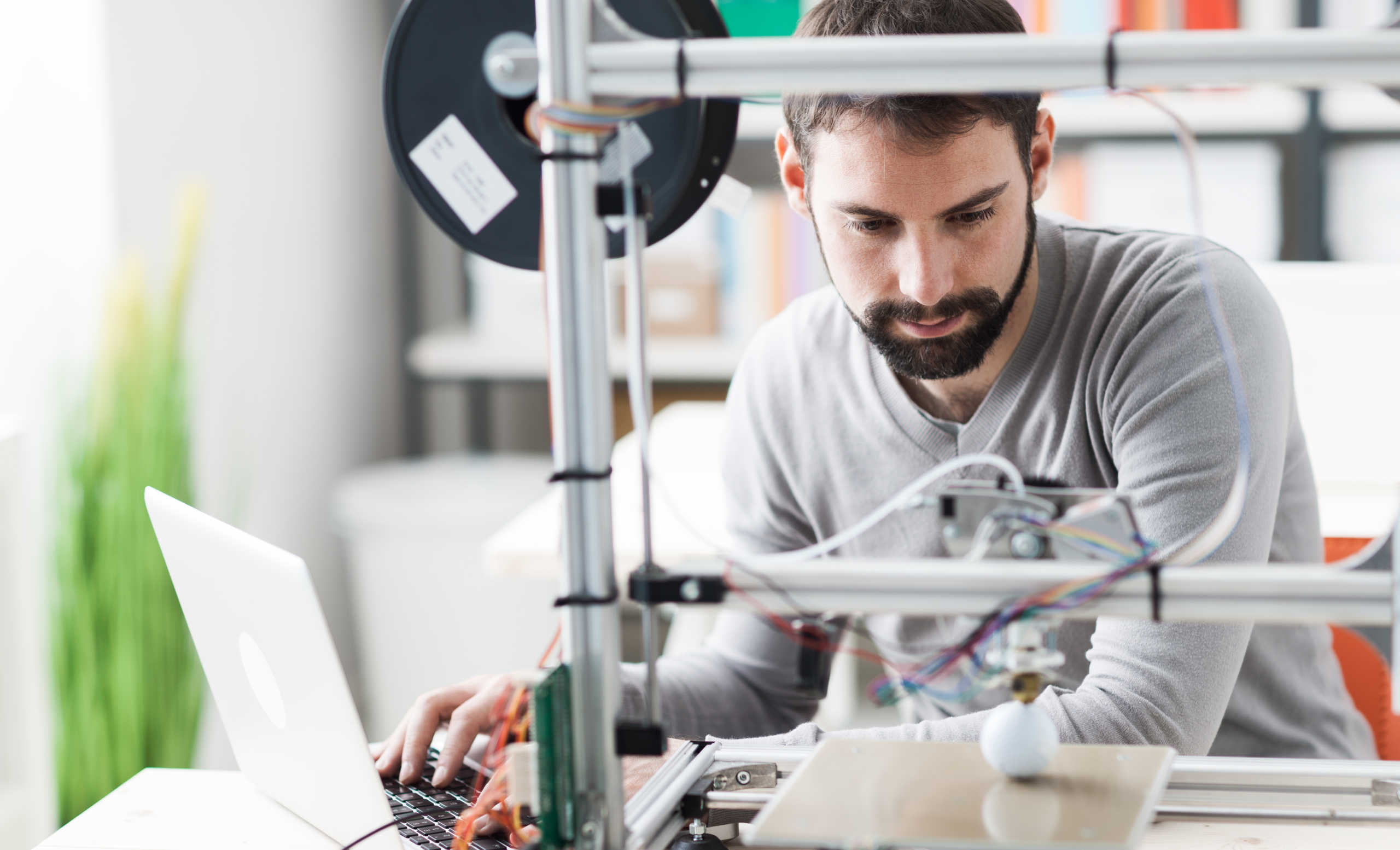Engineers from Anatz, a company from Seoul, are patenting their latest iteration of the material extrusion printer, or 3D printer: one that folds into itself for greater portability.
The patent application was published nearly six years after Anatz unveiled its modular 3D printer. This earlier attempt at streamlining the technology is among many proposed solutions to 3D printers’ glaring issue with bulk. 3D printers may come in various sizes, but they still tend to take up a lot of tabletop space even when not in use, much like their more common, paper-fed counterparts.
3D printers are being actively explored as military implements and interstellar equipment. Portability is a major technological hallmark, and Anatz’s patent application appears to be a step toward that goal.

Anatz’s foldable 3d printer design.
The foldable 3D printer outlined in the document includes two large components: the main body where objects are fabricated and a bridge assembly that executes the process. The U-shaped bridge assembly folds parallel to the main body when not in use, greatly reducing the device’s footprint.
The main body’s platform is designed to move in the X-axis while printing, via a stage transfer guide. Additionally, the platform is magnetically attached, allowing for easy replacement. Conventional 3D printers also employ magnetic beds, with adhesive surfaces that keep builds in place. Depending on the size, a single print can take as little as 30 minutes or several days—keeping the object in place as layers are added is imperative. Anatz’s design appears to be compatible with currently available magnetic beds, if not a separate but similar staging system.
The bridge assembly is more intricate, carrying the nozzle unit which sprays the molding material onto the printer’s platform. Typically, ABS thermoplastic or PLA resin are used for fabrication, though more advanced 3D printers can use carbon fiber or even metal. An extruder unit supplies the molding material for the nozzle; its Y-axis movement is guided by a nozzle transfer bar, which itself is guided along the Z-axis by a nozzle transfer bar guide.
Additive manufacturing, despite being around since 1981, only began seeing mainstream interest in the last decade. 3D printers demonstrate immense fabrication capabilities, with applications in prototyping and manufacturing: two processes of great value to a wide range of industries. From medicine to robotics, 3D printers serve as an important tool for important work. Advances in this space not only stand to make such powerful technology more convenient to use for experts but also more accessible for exploration by everyone else.
The featured patent application, “Foldable 3D Printer”, was filed with the USPTO on January 4, 2021 and published thereafter on July 8, 2021. The listed applicant is Anatz Inc. The listed inventor is Dongyub Lee.





